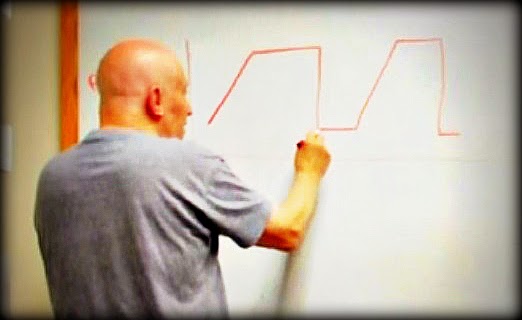As many of you know, I’ve taken a month off to nurture my body through diet while I have fun studying mathematics, specifically category theory. My interest in this branch of mathematics stems from my hope that humanity will someday achieve what I refer to as the “Pythagorean Agenda”—a deep understanding of the relationship between the physical world, the spiritual world, and the world of mathematics.
By physical world, I mean what the hard sciences, like physics, tell us about “what’s out there.” By spiritual world, I mean the core mystical/contemplative experience, which can be described many ways, my personal favorite of which is dissolving in the dialectical process of expansion and contraction (as I have described in a gazillion talks). By the world of mathematics, I mean, well, mathematics.
It’s a well-established fact that mathematics models the physical world and gives us a deep picture of it, in terms of both description and prediction, even sometimes explanation. See “The Unreasonable Effectiveness of Mathematics in the Natural Sciences” by Eugene Wigner.
Many, but not all, mathematicians believe that category theory is far and away the best candidate for a foundation of mathematics. So, if the universe is modeled by math and math can perhaps be founded on category theory, then maybe category theory says something deep about the nature of the physical world—or even spiritual experience. Ideas like this are, of course, highly speculative. But I have to admit that category theory “smells” a lot like Buddhism to me. It’s all about complementary contrasts and connections, and many of its fundamental formulations seem to reflect the dialectical process that is my model for enlightenment. I talk about that (with what I hope are sufficient caveats) here.
So that’s why I’m interested in the subject.
Imagine my amazement when I recently discovered that a couple major figures in the field (Lambek and Lawvere) have given serious thought to some of these issues. Check out this and this. (Warning! This material is uber-meta geek! So you may need to have a bit of equanimity with Don’t Know Mind. On the other hand, if you have a practice, you should experience some pleasant “Feel In” at seeing names like Meister Eckhart and Heraclitus appearing in a rigorous, high-end math web site.)
Although the idea of a dialectical interplay is associated with many conceptual systems (notably Taoism, Hegelianism, Marxism, and such), for me it’s something quite tangible—indeed, I suspect, purely physical.
In the Vipassana tradition of Southeast Asia, an important stage of practice is entered when the student begins to have clear experiences of “arising and passing” (udayabbaya). I believe my friend Kenneth Folk has popularized the abbreviation “A & P” for this perception. In a particularly clear experience of udayabbaya, one gets the sense that no sooner is something arising but it’s already simultaneously passing. Since every sensory event creates a spatial volume, one could refer to the arising as expansion and the passing as contraction, which is the terminology I use because it allows one to experience Self and Scene as a unified expanding-contracting sphere without a fixated observer anywhere. (By “Self” I mean inner See-Hear-Feel activity; by “Scene” I mean outer See-Hear-Feel activity.)
If I had to make a conjecture as to what’s involved here on a biophysical level, my guess would be that it has something to do with improving the efficacy of information processing in the central nervous system—something to do with the inner clocks that time how information is processed. Perhaps somehow during an “A & P” experience, the erasing keeps in perfect pace with activation, leaving no time for somethingness to coagulate. If indeed this is the case, then neuroscience will eventually ferret out the biophysical correlates of this and model it in the kind of standard equations that any scientist or engineer can appreciate. That would create a hard-nosed physical link between mystical experience, dialectical philosophy, and perhaps even some aspects of mathematics that seem “dialectical” in nature.
Furthermore, I suspect (but don’t know) that the deep mind works through connectivity (cf., the Tiāntái idea that “one thought contains 3,000 worlds”,
一念三千). Also if I had to make a conjecture about what “physical reality” is, my guess would be that it’s likewise a vast network of pure connectivity without any connected things per se. Single-sorted category theory might, in some sense, be relevant to that notion, thus creating another link between mathematics, spirituality, and physical reality and, hence, pushing forward the Pythagorean agenda.
Just a thought. : )
- Shinzen on Arising and Passing video by Dave Vago: Part I, Part II, Part III
- Arising and Passing, a blogpost regarding the label for arisings
